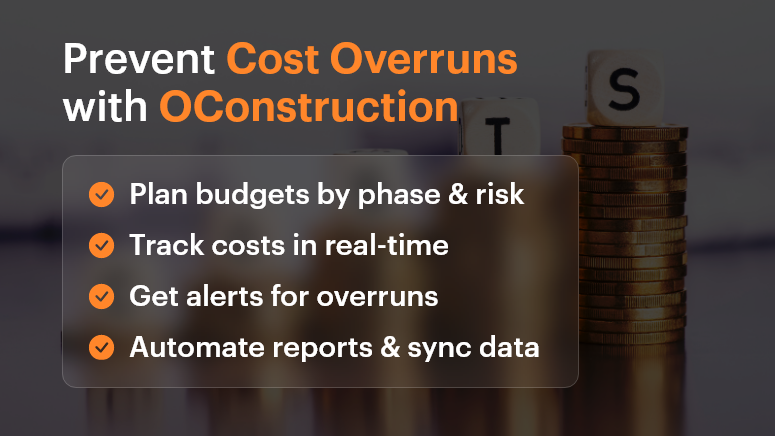Vendor miscommunication is one of the leading causes of construction delays, budget blowouts, and missed deadlines. A single overlooked message, misinterpreted spec, or verbal instruction can send your entire schedule off track. In construction, where timing and accuracy are everything, even minor gaps between project teams and vendors can create costly chaos.
In this blog, we’ll show you how to eliminate vendor miscommunication, streamline collaboration, and deliver projects on time — using practical steps and powerful tools like OConstruction.
Why Vendor Miscommunication is a Big Deal
In construction, vendor miscommunication isn’t just a misstep — it’s a business risk. Here’s what’s at stake:
- Budget overruns: Misunderstood specs or delays from vendors quickly inflate costs.
- Schedule delays: Inaccurate timelines or status reports stall progress.
- Safety concerns: Incomplete or unclear updates can lead to on-site hazards.
Who suffers the most?
- Project managers, who juggle multiple vendors and schedules
- Procurement teams, trying to coordinate timely deliveries
- Field supervisors, relying on real-time updates to avoid errors
Real-Life Scenario:
A contractor sends outdated blueprints to a supplier. Materials arrive cut to the wrong specs. The result? A two-week delay and thousands were lost. In another case, a subcontractor misses a verbal update and skips the site — leaving the crew idle.

7 Proven Ways to Avoid Vendor Miscommunication
1. Centralize Communication on a Single Platform
Stop scattering project updates across emails, spreadsheets, and chat threads. Use a centralized tool like OConstruction to:
- Maintain full visibility for all teams
- Share real-time updates instantly
- Control document versions and reduce errors
Result: Everyone stays on the same page — literally.
2. Standardize Vendor Onboarding
Don’t assume vendors know how you work.
- Set expectations clearly from day one
- Share your preferred communication channels and frequency
- Use digital forms to gather vendor info and assign roles
Result: Consistency and fewer misunderstandings from day one.
3. Use Communication Templates
Templates eliminate ambiguity. Standardize your:
- RFIs
- Daily reports
- Task checklists
- Work orders
Result: Clearer instructions, even when team members change.
4. Automate All Activity Logs
Manual tracking is risky. Let your software handle it.
- Log every file update, task status, and vendor comment
- Keep a time-stamped trail for accountability
- Use built-in alerts to catch missing actions
Result: A digital paper trail that protects your project.
5. Create Vendor Dashboards
Give vendors limited but meaningful access:
- Assigned tasks and their status
- Document versions
- Shared calendars and deadlines
Result: Increased transparency and less back-and-forth.
6. Avoid Verbal-Only Instructions
Train your team to document everything.
- Use built-in voice-to-text tools in OConstruction
- Tag vendors in updates to notify instantly
- Log site instructions in writing — even after a quick call
Result: No more “but you said…” moments.
7. Schedule Weekly Check-Ins and Log Them
Don’t rely on memory.
- Host short weekly syncs with vendors
- Use video or chat, but record and assign follow-ups
- Keep meeting notes in the same platform
Result: Early issue detection and smoother hand-offs.
Use Case: How a Construction Firm Cut Vendor Miscommunication by 60%
Skyline Contractors, a mid-sized construction company, struggled with frequent vendor issues — missed updates, outdated drawings, and late deliveries.
After switching to OConstruction, they:
- Gave vendors shared timelines and dashboards
- Required all updates to be logged digitally
- Used version control to avoid spec errors
The result? A 60% drop in vendor-related issues within 90 days. Projects ran faster, and clients noticed the improvement.
Key Takeaways
- Vendor miscommunication leads to real costs — both financial and operational.
- You can’t eliminate mistakes with just emails and calls.
- Modern construction needs real-time, centralized communication.
Here’s what works:
- Use one platform to manage all vendor communication
- Standardize your process with onboarding flows and templates
- Automate task and comment logging to avoid manual slip-ups
- Keep vendors looped in with dashboards and shared timelines
By combining these habits with a tool like OConstruction, you transform communication chaos into clarity — and that clarity drives project success.


